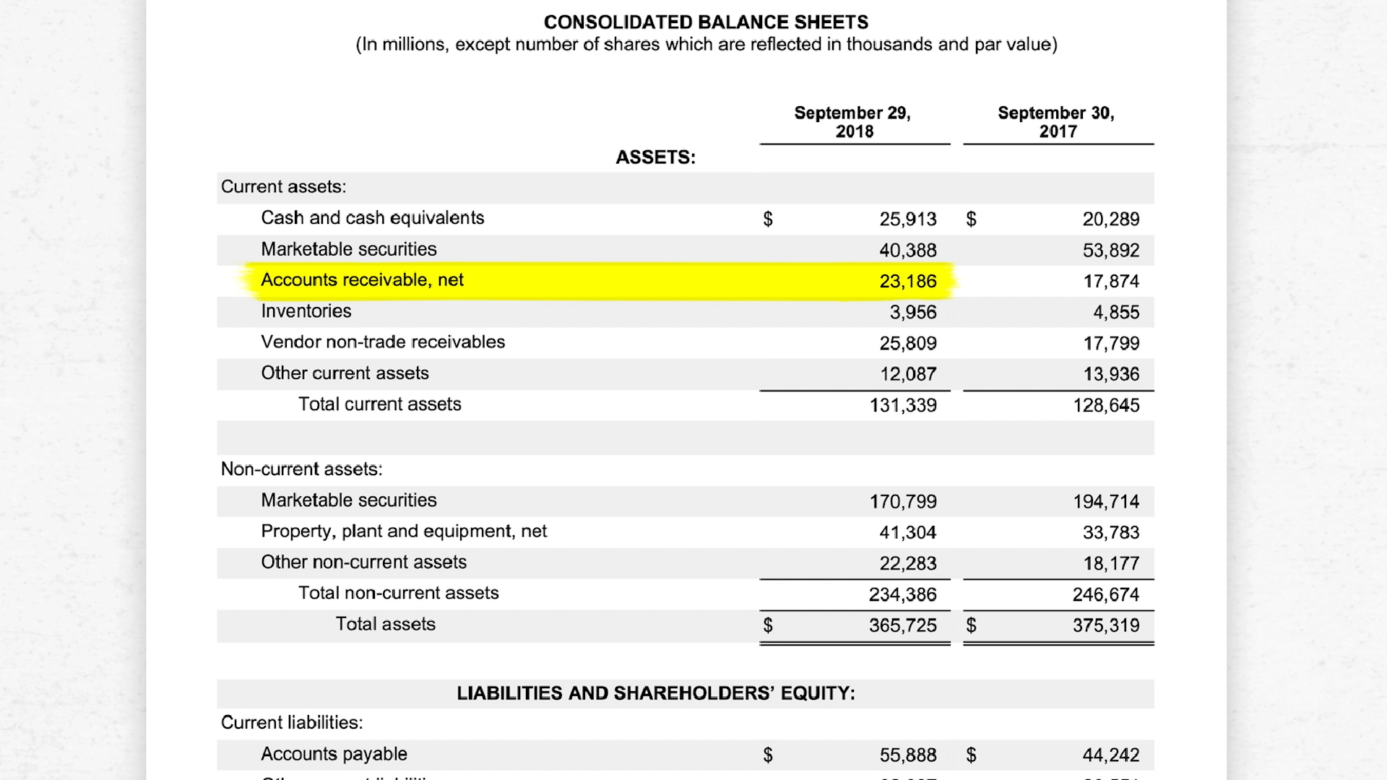The Basics
- “Accounts receivable” (AR) refers to the short-term debts that customers owe a company for goods and services.
- Along with accounts payable, accounts receivable can have a significant impact on a company’s cash flow and overall health. It’s important to track the accounts receivable turnover ratio, which measures how efficiently a company is extending credit and collecting money owed.
What are accounts receivable (AR)?
“Accounts receivable” refers to the money owed to a company for providing products or services on credit. Think of it like an IOU between a business and its customers that must be paid off in a short period of time.
For example, many cleaning companies offer regular services on credit. A cleaning company may visit an office building multiple times per week, and then allow the customer to pay the total amount owed on a bi-weekly basis. That amount owed after the fact is the accounts receivable.
Additionally, AR can refer to a company’s accounts receivable department, which is responsible for handling the accounts receivable payments and process.
What is accounts receivable, “net”?
Sometimes you’ll see accounts receivable specifically represented as “net.” Anytime you see the word “net,” you know that something was subtracted from the total. In the case of AR, most businesses end up having some customers that don’t pay their bill. So to be as accurate as possible, a business will subtract the amount that they estimate they will not receive.
Alternatively, businesses will include a separate line item on the balance sheet for “Allowance For Doubtful Accounts,” directly below the “Accounts Receivable” line item. Doubtful accounts are clients who the business doubts will pay. Allowance for uncollectible accounts is a contra asset that represents the bad debt expenses a company does not expect to collect.
Accounts receivable vs. accounts payable
Accounts receivable is the opposite of accounts payable, which refers to the amount of money a company owes its vendors. Specifically, accounts receivable is “cash expected to come in,” and accounts payable is “cash expected to go out.”
In the above example, the same transactions that fall under accounts receivable for the cleaning company would be categorized as accounts payable for the office retaining its services.
Accounts receivable vs. revenue
Accounts receivable refers to the revenue a company earned from customers who purchase goods or services on credit. When a company receives payment, the cash balance will increase and accounts receivable will decrease, but the revenue happens when the purchase is made and the goods or services are delivered, regardless of when the cash is paid.
Where do accounts receivable appear on a company’s financial statements?
When a transaction occurs, a receivable is created even though cash has not yet changed hands. These transactions impact each of the financial statements in the following ways.
On a balance sheet
An account receivable is considered an asset account and therefore appears in the “current assets” section. Since a balance sheet acts as a company’s overall financial statement for a specific point in time, the line item for accounts receivable on the balance sheet represents the total amount of short-term debts from customers it’s owed at the time.

On a cash flow statement
Accounts receivable appears under the first section of a cash flow statement, typically referred to as “cash from operations,” under “changes in current assets and liabilities.”
Why are accounts receivable important?
Accounts receivable affects a company’s cash position and ability to operate, so it’s important that debts are collected quickly enough to replenish the business for the goods and services fronted. This also means the efficiency of the AR department and accounts receivable process overall are crucial to keeping the company running smoothly.
What’s the relationship between AR and cash flow management?
Accounts receivable is not just about the task of collecting the debts that are owed; it’s also about making sure you’re extending credit in an effective, sustainable way. The accounts receivable turnover ratio, which reflects the number of times a company collects its average accounts receivable in a given period of time, shows how efficiently a company is using its assets, and also serves as an important indicator of overall financial and operational performance.
What are some best practices for accounts receivable recording and bookkeeping?
Here are three tips for smooth accounts receivable processes:
1. Establish a credit policy.
Before offering goods and services on credit, do a credit check to evaluate a customers’ ability to pay. This should include an internal process and scorecard to guide your decisions around when to extend credit, how much credit to extend, and when you might need to place an account on hold. This process is especially important when it comes to new customers—especially those looking to purchase large volumes on credit—and should regularly be reviewed to ensure its effectiveness as markets and risk profiles change.
2. Set payment terms that work for you.
Payment terms that set your business up to recoup account receivables quickly are critical to your cash flow. Businesses commonly require payment within 30 days or 15 days of the transaction, and some may find it worthwhile to offer an incentive—such as a discount—that encourages customers to pay early. It’s also becoming more common to set payments as due upon receipt of the invoice. Setting up a convenient payment portal can also encourage customers to pay more quickly.
3. Consider automation.
Today, there are various automated services and solutions available that can streamline your accounts receivable process. This can reduce costs and help minimize errors.
Pareto Labs offers engaging on demand courses in business fundamentals. Built to help you elevate your game at work, our courses distill complex business topics — like how to read financial statements, how to manage people, or even how to value a business — into digestible lessons. No business background required. Our library of 200+ lessons will teach you exactly what you need to know to use it at work tomorrow. Sign up for a free trial today to start watching.

